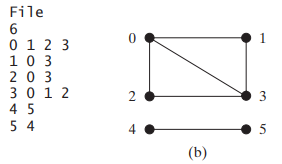(Find connected components) Create a new class named MyGraph as a subclass of UnweightedGraph that contains a method for finding all connected components in a graph with the following header:
belongs to book: Introduction to Java Programming, Comprehensive Version (10th Edition)|Y. Danial liang|10th edition| Chapter number:28| Question number:4
All Answers
total answers (1)





 Java programming
Java programming
Exercise_28_04.java
Graph.java
MyGraph.java
UnweightedGraph.java
need an explanation for this answer? contact us directly to get an explanation for this answer